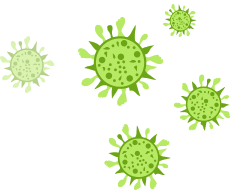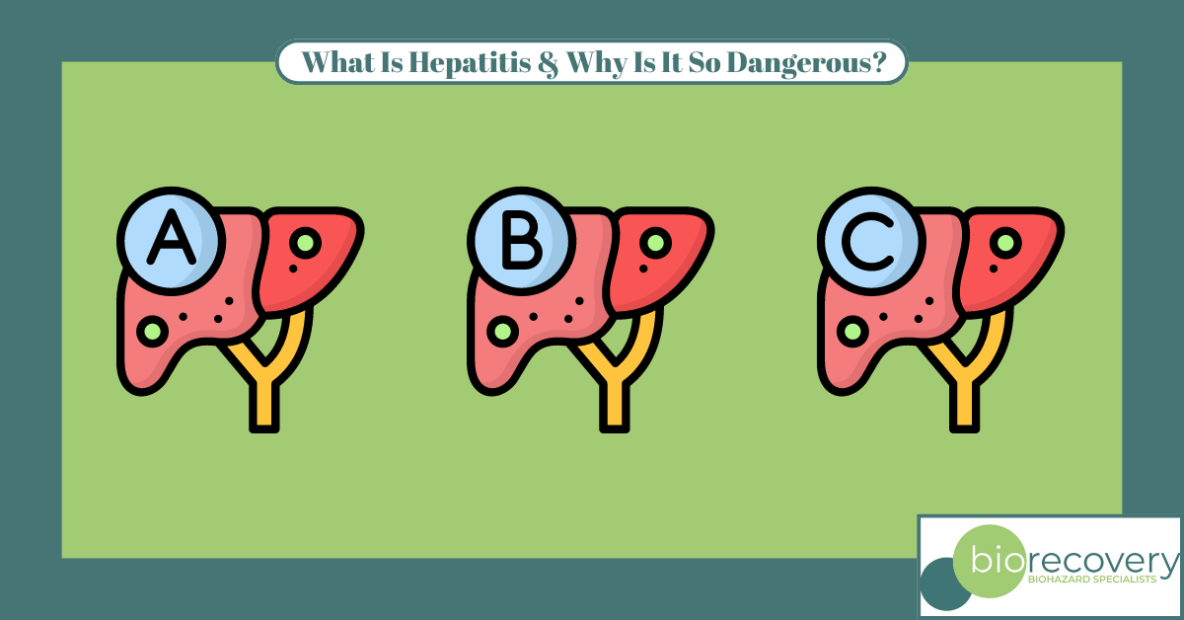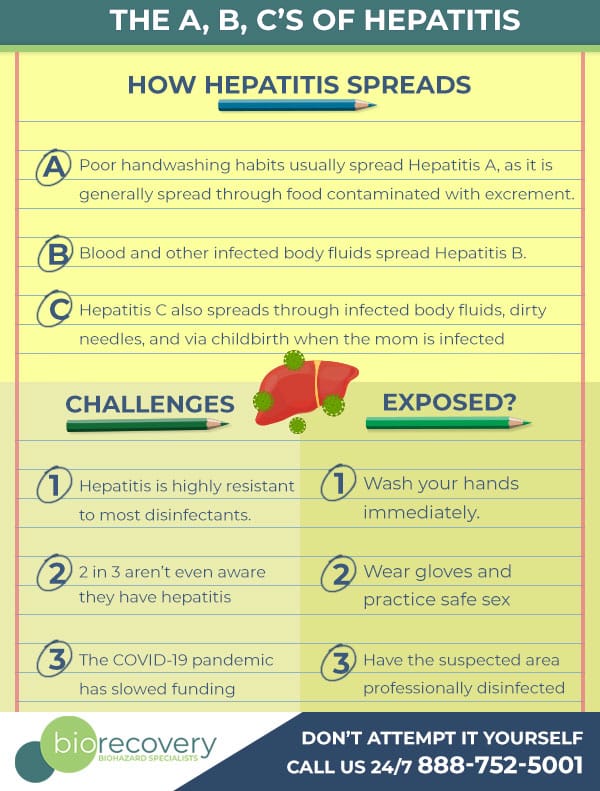Key-Points
Hepatitis is one of the most contagious and resilient potentially fatal infectious diseases.
There are many challenges in prevention and treatment that must be addressed through awareness and funding
If you've tested positive, wash your hands immediately, and call the professionals.

With well over an estimated 2.2 million Americans carrying hepatitis unknowingly, Hepatitis sits firmly on the Mount Rushmore of infectious diseases. All types have been consistently recognized as a public health concern by the World Health Organization, with each type having varying causes, symptoms, and potentially fatal prognoses. Approximately 1.3 million die from the illness every year, not only making it a leading cause of death worldwide, but one of the most challenging to control. But what is hepatitis and what makes it so deadly?
The World Journal of Gastroenterology did a long term study and found nearly a quarter of those infected with HPV develop fatal cirrhosis of the liver within 10-20 years. In this article, we'll break down how dangerous the virus is, who is most vulnerable, and the challenges we face eliminating this dangerous disease.
What is Hepatitis and How Does it Spread?
Hepatitis means "inflammation of the liver" according to the CDC. All strains predominantly affect the liver and reduce the individual's ability to filter toxins out of the blood. The type is determined by what caused the liver damage, whether it be alcohol, environmental toxins, or other exposure. The three most common strains include:
- Hepatitis A: This type of hepatitis is transmitted by food contaminated with fecal matter. Poor handwashing habits among the infected, bad sanitation practices, and even sexual activity are responsible for its transmission.
- Hepatitis B: The virus is carried through blood, sexual activity, and other body fluids. Sharing needles is a common culprit of transmission, as is sharing personal hygiene items such as razors or toothbrushes. Like MRSA, this type usually has outbreaks in hospitals and nursing homes.
- Hepatitis C: This type is spread predominantly through blood or body fluid, often through sexual contact or intravenous needle sharing. It can also be transmitted from mother to child during childbirth.
Despite a number of prevention methods, viral Hepatitis continues to have a high infection rate of over 40 million in China alone, as per a 2022 study.
Who is at greatest risk?
The type determines the spread as well as the risk. Those affected make up a large range. Below are a few that can be at risk:
- Customers and employees from the food service industry, as we saw in the 2019 outbreak and the most recent 2022 organic strawberry recall.
- Intravenous drug users
- Unprotected sex
- Children born to infected women
- Contact with infected body fluid (healthcare workers, daycares and schools, medical students, and first responders are high risk)
For more information, please read more on hepatitis transmission.
Challenges in Prevention and Treatment
Treating and preventing infectious diseases is an ongoing war. Despite the growing global support, hepatitis continues to face multiple prevention and treatment challenges in 2022. We need to continue to spread awareness to save millions of lives every year. Here's the most significant challenges in prevention and treatment:
- Hepatitis A is highly resistant to most commercial disinfectants. Studies show the virus remains active on most commercial kitchen surfaces, even when treated with industry standard ratios of stabilized chlorine dioxide, quaternary ammonium, dodecylbenzene sulfonic acid and phosphoric acid.
- Hep A is the most resilient and contagious strain. This is because it can be spread before symptoms are present.
- 2 out of 3 infected with Hep B don't even realize they are carrying it.
- The CDC estimates around 6-10% infected by HBV result in chronic conditions, particularly among unvaccinated babies.
- The World Health Organization faces major funding setbacks in the plan to eliminate hepatitis by 2030, partially as a result of the COVID-19 pandemic.
- Treatment and vaccinations are only available for certain types and availability depends on a number of factors, including the country. For example, there are no vaccines against Hep C (also referred to as HPV) and Hep C treatment is complicated and costly.
- There continues to be quality control, viral testing problems, and injection safety issues in low and mid income countries (or LMICs). This also prevents accurate research collection in these areas.
- LMIC countries have issues preventing infected infants from getting the cure in a timely manner.
- At least 50% of people sick with Hep C have the virus for life.
- Despite the improving outlook in LMIC countries, support is slow, and most countries are not committed to annual elimination targets proposed by the WHO.
Thankfully, most outbreaks are well contained when proper sanitization and disinfection procedures are conducted.
Immediate Steps to Take After Suspected Exposure
Any suspicion of hepatitis exposure should be taken seriously. These types of infectious diseases are dangerous and you don't want to run the risk of spreading the virus to your loved ones. Below is our advice on what to do immediately after you suspect you've come in contact with the virus. This should also be used as guidelines on how to handle a potential contamination when it's in your home.
- Wash your hands: A 30 second thorough handwash using soap and water reduces the likelihood of spreading disease from fecal matter or surfaces.
- Wear PPE: Gloves can still be very helpful to keeping you and others protected. Hepatitis isn't airborne, however a face mask can be useful if you have the tendency to touch your face.
- Call the pros: When you deal with any potentially fatal infectious disease, any margin of error needs to be minimalized. Hire professionals like Bio Recovery who have crews trained in the same CDC and OSHA procedures that keep hospitals sterilized.
Professional Cleanup Services For Disinfecting Hepatitis
No untrained individual should attempt to do this on their own. Only trained professional disinfection companies like Bio Recovery should disinfect hepatitis. Bio Recovery is licensed and follows OSHA bloodborne pathogen standards with a focus on thoroughly clean the area and protect anyone who may be exposed.
- Proper protective gear such as approved gloves, coveralls, and other PPE are worn to prevent exposure to the cleaning crew as well as reduce the chance of cross-contamination.
- The area will be ATP tested several times throughout the process to ensure surfaces are properly disinfected and sterilized.
- EPA registered hospital grade disinfectants must be used to decontaminate in residential and commercial areas. Bio Recovery is one of the only top leading professional disinfection companies to use botanical based EPA registered disinfectants whenever possible to reduce allergens and protect the environment.
- Bio Recovery staff is trained to properly decontaminate cleaning equipment and dispose of biohazardous waste as necessary. The goal is always to eliminate cross-contamination between areas in your site.
- With over 20 years experience, Bio Recovery is able to quickly and efficiently clean areas that test for less organic matter using low-level disinfectant/sterilant.
- Bio Recovery is certified and licensed in the proper methods as well as transport of biologically hazardous waste and its disposal by OSHA and the Department of Transportation.
References
It can be dangerous to try and handle a problem such as this yourself, not to mention unnecessary. Hiring Bio Recovery will save you time as well as the headache of never really being sure if the area is clean enough. Call us to ask questions and set up an appointment to have your home or business cleaned the right way.
Share this Post

